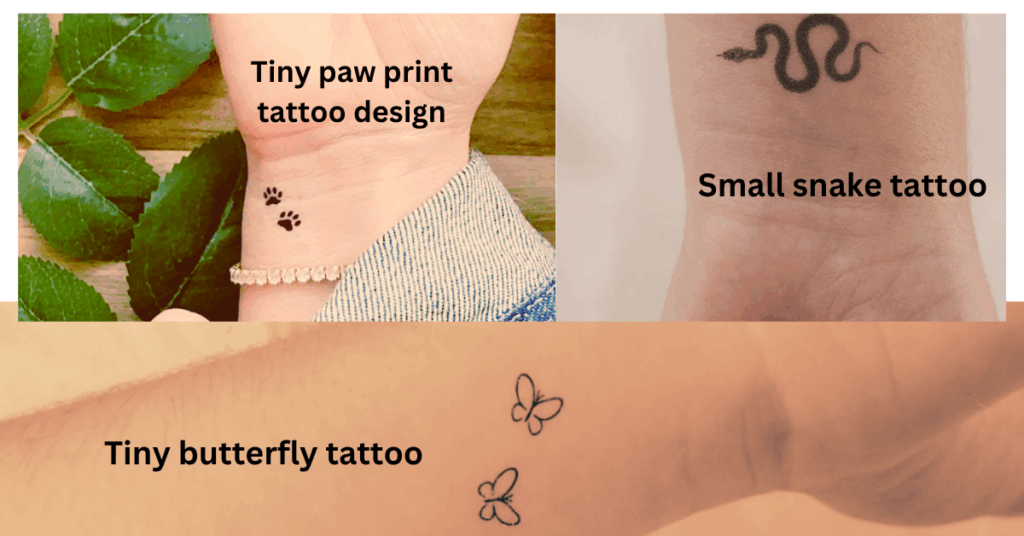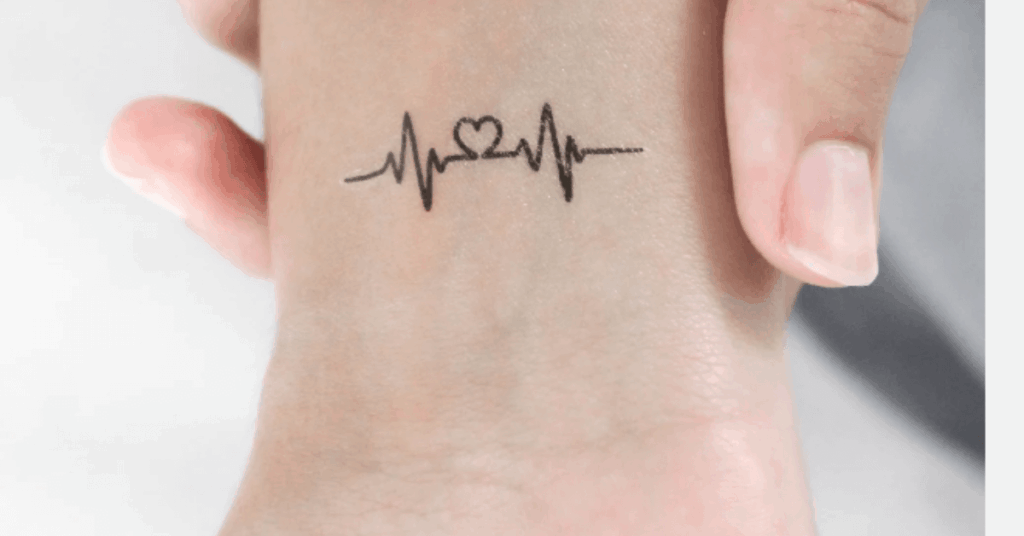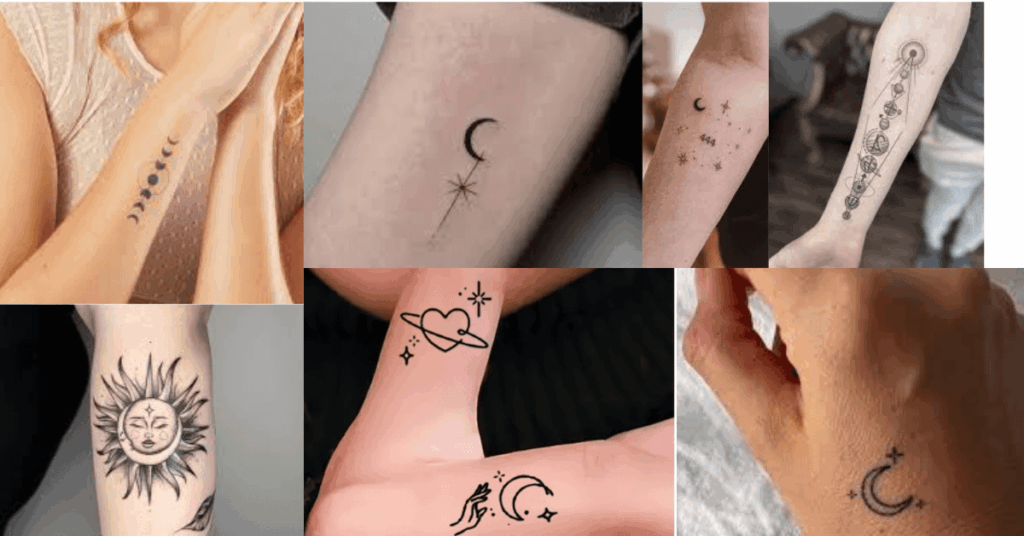A ‘tramp stamp’ is a slang term for a lower back tattoo, most commonly seen on women. Tramp stamp tattoo rose to prominence in the late 1990s and early 2000s, but was frequently linked with negative stereotypes and cultural judgment.
But here’s the twist: tramp stamps are making a comeback, and this time with a redefined purpose. Artists, celebrities, and ink enthusiasts are reclaiming this controversial canvas, not as a trend, but as a symbol of confidence, control, and body pride.
So, what is a tramp stamp? Is it just a dated fashion trend or something more powerful? Let’s dig deep into tramp stamp tattoo meaning.
How Tramp Stamp Tattoos Rose to Fame
The tramp stamp rose to fame in the late 1990s and early 2000s when low-rise jeans and crop tops dominated fashion. This made the lower back the perfect subtle yet sexy spot to flash a bit of ink.
Celebrities like Britney Spears, Christina Aguilera, and Pamela Anderson helped skyrocket the popularity of female tattoos, particularly those located on the lower back. They wore theirs with pride, setting off a massive tattoo trend among young women.
But despite the surge in popularity, the term “tramp stamp” quickly took on a derogatory tone. Critics labeled it as attention-seeking or promiscuous, reinforcing outdated and sexist ideas about women’s bodies and choices.
Why is it called a tramp stamp?
The term combines “tramp” (a derogatory word for a woman perceived as sexually liberal) and “stamp” (as in, marked or labeled), unfairly painting wearers with a single brushstroke.
What Does a Tramp Stamp Tattoo Mean Today?
The tramp stamp tattoo meaning has evolved far beyond the early 2000s stereotype. Today, it’s a statement of empowerment, sexuality, and self-expression. For many, getting a lower back tattoo is about:
- Body confidence: It’s an area that requires you to own your body and celebrate it unapologetically.
- Feminine energy: This area aligns with the sacral chakra, which governs sensuality, creativity, and emotional depth.
- Artistry: The symmetry and curvature of the lower back offer a unique canvas for tattoo artists.
- Reclaiming power: For some, wearing what was once used to shame women is a bold, defiant act of reclamation.
So, what does a tramp stamp mean today?
It can mean freedom, strength, sensuality, or simply: “I love this spot and this art, and it’s my choice.”
In short, the tramp stamp meaning today is whatever the wearer wants it to be.
Popular Tramp Stamp Designs & Their Symbolism
Lower back tattoos are all about symmetry and flow, and many designs have become synonymous with the tramp stamp tattoo aesthetic. Here’s a breakdown of the most popular motifs and their tattoo symbolism:
Butterflies
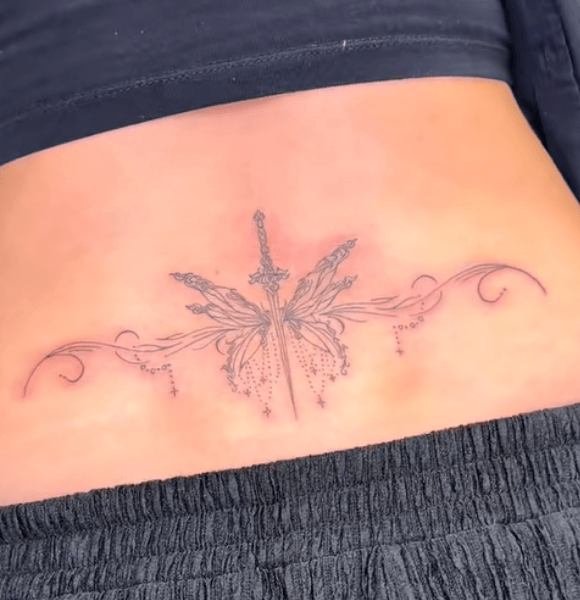
A classic feminine tattoo, butterflies represent transformation and freedom.
Meaning: Growth, rebirth, and embracing change; especially significant for women marking a new life phase.
Flowers (Roses, Lotuses, Cherry Blossoms)

Floral tramp stamps add softness and symbolic beauty to the lower back. Among these, peonies are gaining popularity for their rich cultural and personal meanings.
Meaning: Peonies represent romance, prosperity, and feminine strength, making them a stunning lower back tattoo choice; especially for those who want a piece that’s as meaningful as it is beautiful.
Tribal Designs
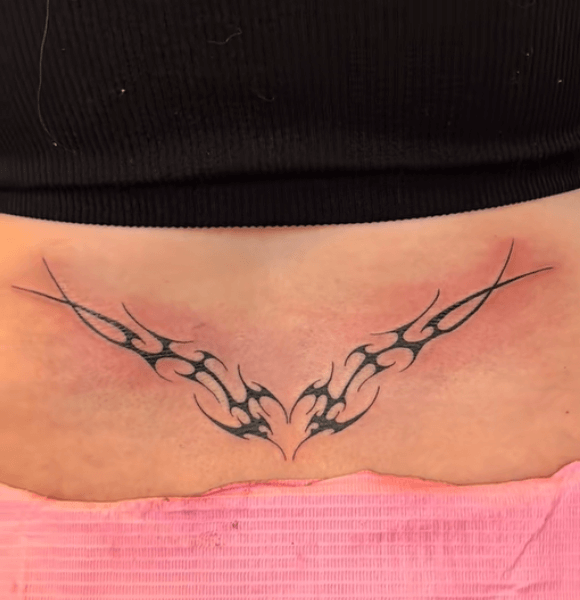
Often curved to follow the spine, tribal tattoos were one of the earliest tramp stamp styles.
Meaning: Strength, primal identity, cultural heritage (though modern versions are often aesthetic rather than rooted in tradition).
Celtic Knots or Spirals
Rooted in ancient European cultures, these are perfect for a lower back piece that symbolizes eternity.
Meaning: Connection, life cycles, and spiritual infinity.
Stars and Shooting Stars
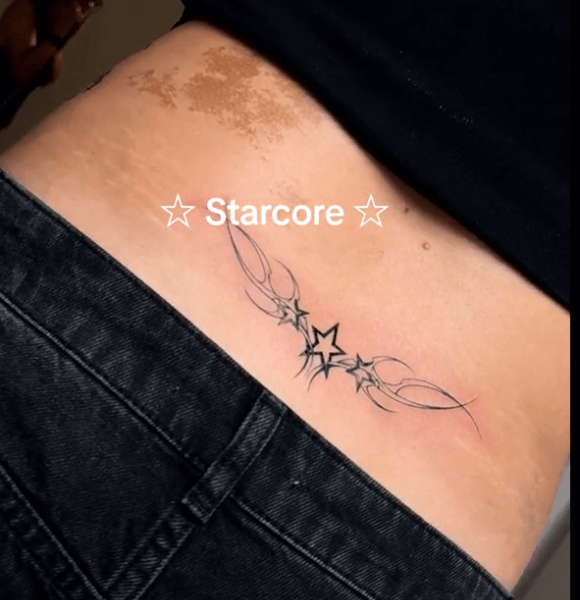
Often seen in multiples, stars symbolize aspiration and mystery.
Meaning: Guidance, dreams, and hope.
CyberSigilism Tramp Stamp Tattoos
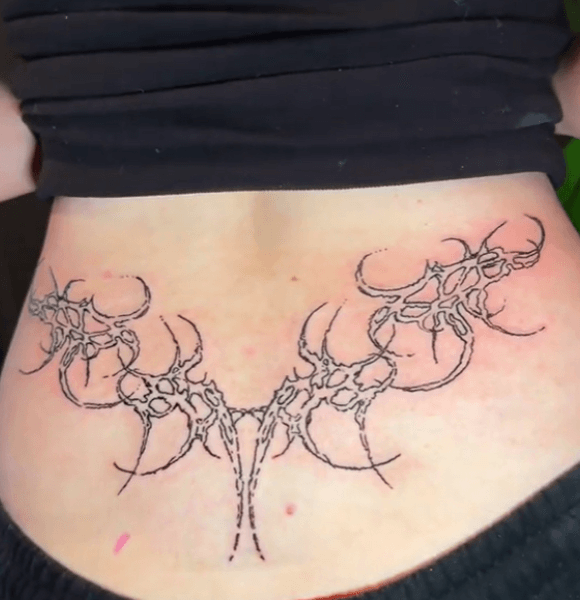
A modern, abstract style that blends occult, tech, and sacred geometry, cybersigilism tattoos feature sharp black linework and symmetrical patterns, perfectly suited for the lower back’s curvature.
Meaning: Personal power, mysticism, and rebellion in the digital age. It’s less about decoration, more about intention, like wearing coded energy on your skin.
The Stigma & How It’s Changing
The tramp stamp definition has long been wrapped in unfair judgment. Let’s call it what it is: sexism. The idea that a woman’s tattoo placement defines her morals or worth is outdated and harmful.
The shame around tramp stamp tattoos was never really about the art, it was about controlling how women expressed themselves. Fortunately, things are shifting:
- Younger generations are pushing back against tattoo shaming.
- Celebrities and influencers are proudly showing their lower back ink again.
- Feminist movements are calling out the double standard, why is it “hot” on a man’s chest but “trashy” on a woman’s back?
FAQs About Tramp Stamp Tattoos
Is “tramp stamp” still a derogatory term?
It can be, but many people are flipping the script and reclaiming it with pride. Some prefer to call it a “lower back tattoo” to avoid negative connotations.
What does a lower back tattoo mean for different people?
For some, it’s sensual and empowering. For others, it’s a meaningful tribute, a celebration of body art, or simply a spot that feels visually balanced.
Is getting a lower back tattoo painful?
Pain levels depend on your tolerance, but generally, the lower back has more muscle and fat, which can reduce pain. That said, the spine area can be sensitive.
Are tramp stamps back in fashion?
100% yes. TikTok and Instagram are full of people embracing nostalgic 2000s fashion and ink. Lower back tattoos are once again trending but with a more powerful message behind them.
The New Era of Tramp Stamp Tattoos
As tattoo trends continue to evolve, so do the meanings behind them. Gone are the days when tramp stamp tattoos were viewed through a lens of ridicule. Today, they’re being reclaimed by a new wave of people who love their bodies, love their ink, and won’t let outdated opinions define them.
Whether you’re reviving a 2000s aesthetic or simply choosing the lower back tattoo for its artistic potential, you’re part of a cultural shift that’s rewriting what these tattoos mean.

